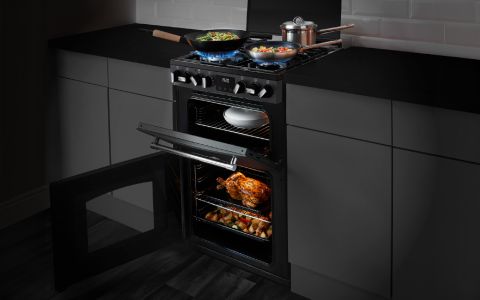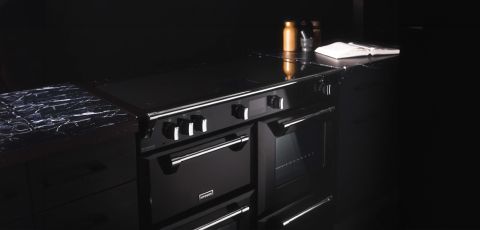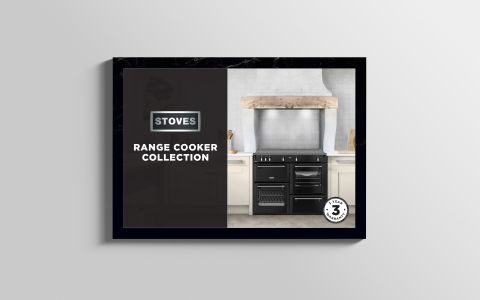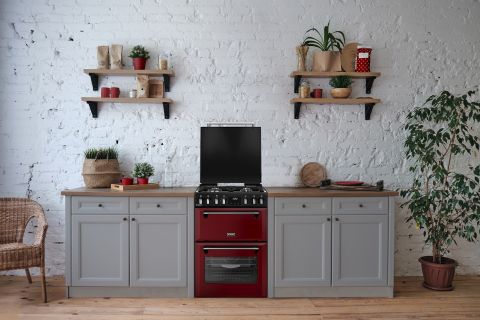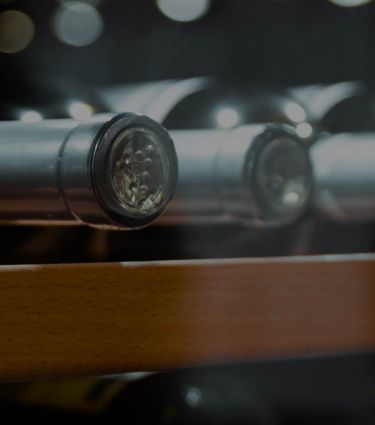
Refrigeration & Wine Coolers FAQs
- NF – No Frost – these fridge-freezers use fans to cold air around the fridge and freezer compartments for a more even distribution of coldness at all levels, which means you can store foods on any level. The freezer is self-defrosting, so there is no need to defrost manually. In the fridge, the coldness comes from cold air being blown in from the freezer rather than from the back wall, so there is no risk of items freezing if they touch the back wall.
- WTD – Water Through the Door – offers the convenience of chilled water dispensed through the door from a container that you fill up by hand, without the need for the fridge-freezer to be plumbed in to a water supply.
- SXS – Side by Side – also known as an ‘American-style’ fridge-freezer. These units had a very large fridge on the right and a large freezer on the left, with doors which open outwards.
- 4 star frost-free freezer – Frost-free freezers use a fan system to circulate cold air around the food for fast, even freezing and defrost themselves when required automatically, saving you a job. The 4 star rating means that the freezer can freeze fresh food and keep frozen food stored in top condition for up to 12 months.
- Twist ice-maker – This clever icemaker allows you to make ice cubes easily without needing to have the fridge-freezer plumbed into a water supply. Just fill the moulds with water, let it freeze, then turn the dials to twist out the ice cubes into the storage tray, so that you always have ice on hand.
- Quick-cool – a setting which makes the motor run continuously for a few hours to cool the food more quickly and preserve freshness – useful when you have just come home with a big shop of fresh food.
- Quick-freeze – a setting which makes the motor run continuously for a few hours to freeze the food more quickly and preserve freshness – useful when you have a large amount of fresh food to freeze or you have just done a big shop of frozen food.
- Vacation mode – an energy-saving setting for holiday periods which reduces the power consumption of an empty fridge but still keeps the food in the freezer frozen.
- Yes, refrigeration appliances, including wine coolers, are usually provided hinged on the right so that the doors open from left to right, but the hinging can be reversed so that the doors open from right to left.
- American-style side-by-side fridge-freezers (SXS models) have doors which open outwards and so the hinging is not reversible.
- For full details please see the instruction manual for the model here.
- Yes, the doors can be removed from the SXS 90cm models to make it easier to get the appliance inside the property.
- The installer then reattaches the doors once inside.
How do I set the temperature for my product with an electronic control?
- The numbers represent degrees Celsius. Fridges are usually set to 3°C or 4°C, while freezers are usually set to at least -18°C for freezing fresh food and storing frozen food.
- Please note that the temperature selected represents the required temperature, not necessarily the actual temperature inside the appliance. It may take a few hours for the appliance to get to a newly requested temperature after it has been changed.
- Total No Frost fridge-freezers (NF models) have an extra dial behind the salad drawer to control the freezer temperature.
- If the ambient room temperature is less than 20°C, turn the dial between the ‘normal’ setting and the ‘colder (winter)’ setting.
- If the ambient room temperature is between 20°C and 30°C, turn the dial to the ‘normal’ setting.
- Should the ambient room temperature ever be above 30°C in very hot weather, turn the dial between the ‘normal’ setting and the ‘cold (summer)’ setting.
- On models with mechanical controls, there will be a dial with numbers such as 1-5 or 1-6. In this case, the higher numbers indicate colder temperatures, and the lower numbers indicate warmer temperatures.
- Usually, the higher numbers are used in summer, the lower numbers in winter, and a medium number in spring and summer.
- Please check that there is power to the appliance, and that the fridge light comes on when opening the fridge door.
- Please check that a suitable temperature has been selected on the controls.
- Please check that the door(s) are closing and sealing well.
- Please store more perishable items, like meat and fish, towards the bottom of the fridge, just above the vegetable tray as this tends to be the coldest zone.
- For frost-free appliances, please check that nothing is blocking the fan at the top of the freezer compartment.
- Please ensure that the kitchen (or room the appliance is in) does not get excessively hot or cold – generally speaking, fridges and fridge-freezers cannot work as well in locations colder than 10°C or warmer than 32°C.
